What do you get when two self-taught artists with equal passion for the environment decide to work together? The answer is an initiative that makes unique art and is eco-friendly and sustainable as well. That’s what ‘The Druid’s Garden’, a venture run by Mumbai-based Naomi and Yohann Pereira is all about.
The mother-son duo’s venture makes various homeware products that are exclusive and functional. But the most important thing to note is that they only use reclaimed, recycled and upcycled materials for making their products.
The Druid’s Garden, which was established in 2018, focuses on mosaic art, wood art and rustic-looking furniture.
The product range includes planters, cabinets, centre and side tables, mirrors, wall art, benches, shelves to keep books and curios, chairs and stools. They even have furniture like swing sets, birdbaths, and indoor items like floor and table lamps, name plates and candle holders.
Their products have also been sourced by different hotels, hospitals and organisations, apart from individual clients. Here’s the duo sharing their story.
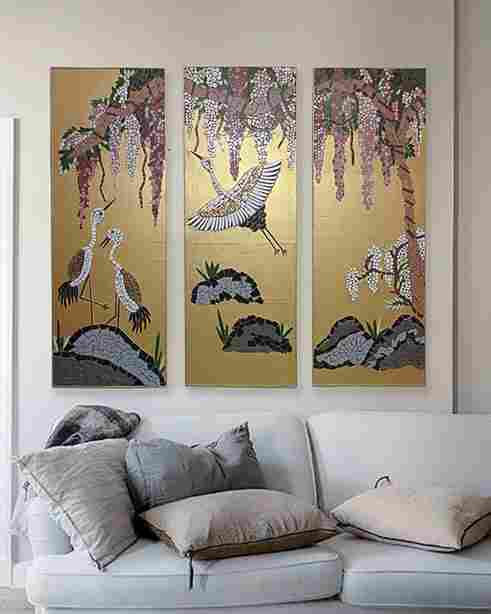
How the studio came to be
Naomi explains why the duo decided to name their studio Druid by saying, “Druids were priests and soothsayers in ancient Celtic culture who had a special bond with the natural world. They considered trees sacred. I grew up close to nature and that’s why my mosaic art specialises in nature-based themes. The name for my venture was a perfect blend of both my areas of interest – nature and spirituality.”
Naomi was greatly influenced by the works of Antonio Gaudi, a Spanish architect and designer. His flamboyant style and unapologetic use of colour appealed to her nature.
The 63-year-old continues, “I was an artistic child. My mother would say humorously, ‘Give her a piece of dirt and she will turn it into gold!’ I imbibed her sense of discipline and courage. And I learnt how to take risks from my father.”
She adds how her father would encourage her to try new things by saying, “What is the worst that could happen? You would fail. That too is a learning experience.”
Her artistic journey with mosaics began when she was in her thirties. One day, when she was beautifying her father’s garden, an old bench became her first artistic project in mosaics. With her father being a property developer, he was also her go-to person for chemicals, gums and other products she needed for her work.
“Art can be inborn or cultivated. My art was mostly cultivated over the years.” She learnt mosaic art from books, videos, and by talking to professional tilers, masons, hardware experts and, of course, through a process of trial and error, she narrates.
In her style of mosaic work, she collects broken tiles and breaks them further to see what pieces emerge and then gets creative with it. She does not use pre-cut mosaics.
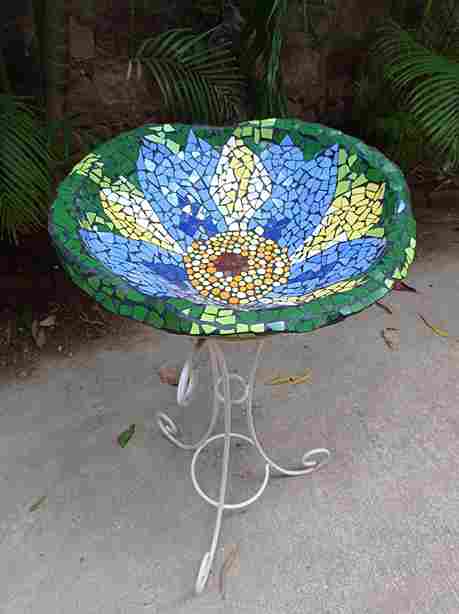
Rare genre of art
A single parent, Naomi brought up her son and daughter while teaching English, History and Geography in schools.
Mosaic art was mainly her hobby for many years. Her keen interest in nature, gardening, decor, and DIY (do-it-yourself) art led her to make pieces for her own home followed by those of friends and family. She was not confident enough to go commercial yet. It was her son who encouraged her to do so in 2018.
Yohann, who had worked in hospitality, sales and strategy for 10 years, was initially hesitant to give up his corporate job and join the venture.
“I wanted to offer something no one else was doing. After some research, I realised that very few people work with mosaics and driftwood in India. It is a rare genre of art. But it is also a very niche market. Few people understand and appreciate our art,” says the 38-year-old.
He learnt how economically viable and sustainable the business was before plunging into it. The Druid’s Garden was doing well for two years but the COVID-19 pandemic proved to be a setback. But those years helped Yohann identify his target audience more sharply.
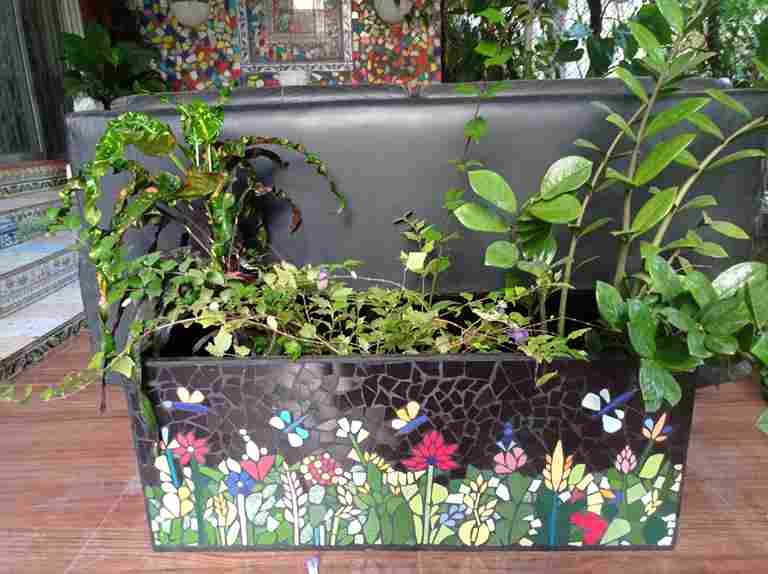
Eco-friendly aspects of their business
The duo is very particular that they do not destroy anything in nature. They do not support cutting down trees. That’s why they use discarded driftwood and recycled timber – the two most environmentally-friendly ways to acquire wood. “We try as much as possible to salvage and upcycle our raw materials,” explains Yohann.
Every few months they go to the beach at Gorai fishing village and pick up pieces of driftwood which they feel they can work with to make something beautiful.
Naomi uses scrap and discarded materials like old, broken tiles, broken bangles, cracked vase pieces, pebbles and stones, beads and seashells in her mosaic art. Initially, she acquired sample tiles from shops. Her friends who knew of her work saved up their broken pieces of crockery and tiles remaining from renovation work for her.
Now, as the business has grown, she purchases broken tiles in bulk from sellers. In cases where the client wants a particular colour or design she buys tiles from stores.
Another interesting raw material that she uses are the buoys in the sea. Made from fibre which is anti-corrosive, these buoys are being replaced by plastic ones these days by fishermen and are being discarded carelessly.
Naomi and Yohann then buy them from the fishermen to make planters embellished with mosaic or to build lotus ponds in which you can also put fish. The fibre is cleaned, refurbished and reused to make the signature planters or pond structures.
“We adhere to our eco-friendly practices of minimum usage of chemicals on the wood. This way, it retains its natural beauty as well. We use linseed oil and tung oil as curing agents for protecting the wood and giving it a finish. However, we have to use an anti-termite solution to ensure the products are long-lasting. Otherwise, there is no point talking of sustainability if the products won’t last for the customer. We use machines to cut the wood but our products are hand polished,” elaborates Yohann.
The wastage in the studio is kept to a minimum. Naomi collects the pieces that are left over from her pieces in three containers depending on their size and reuses them. Only the fine tile powder is wasted. Even in wood materials, wastage is avoided. For instance, a big piece of driftwood is cut into two so that one piece can be used to make a lamp and the other a side table.
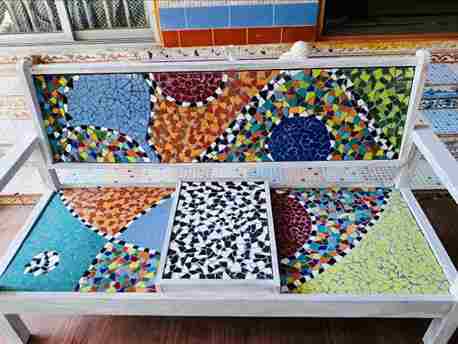
Changing perceptions
When they hear the word mosaic in India, most people think of tiling chips put as flooring in rooms, terraces and on compound walls. Very few know that mosaic is a truly ancient art form which goes back to the ancient Mesopotamia, Greece and Rome, says Naomi.
“We have tried to give mosaic art the recognition it deserves. I am happy to say that my art is now being used indoors as wall art, murals, and picture frames replacing traditional paintings, and on table tops and cabinets,” says the elated artist.
Since they are exclusive pieces, the mosaic and wood art doesn’t come cheap. Also, since only the two of them handle the creative aspect of the business, they cannot make products in large numbers.
Additionally, there are two other people in their workshop who help with the mosaic works along with three freelancing carpenters and polishers for the woodwork.
The wall arts from their studio start at Rs 2,000-2,500 per square foot, depending on the intricacy of design. The price of a driftwood centre table ranges from Rs 18,000 to Rs 40,000 which depends on the size and the quality of wood. Mosaic garden tables, two feet in diameter, cost Rs 12,500. Floor lamps are priced at Rs 7,000-10,000. Planters range from Rs 5,000-15,000, depending on size.
Yohann has a residence-cum-studio in Bandra where clients can take a look at the products. The company gets orders from across India. “In fact, more than half of our clientele is outside Mumbai. Our products are large and meant for large spaces. Around 60 percent of our pieces are custom-made while 40 percent is from an inventory. We are now looking to grow the business through projects to do up villas and homes by collaborating with interior designers,” he says.
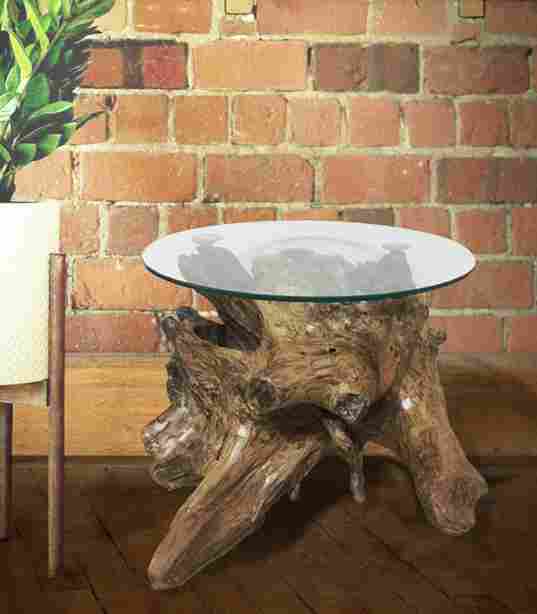
Creating unique products
While their mosaic pieces are indeed eye-catching, it’s their driftwood tables and other wares that are equally beautiful too. Driftwood is basically the wood that has been washed ashore onto a beach from the sea, lake or a river.
“Driftwood as well as upcycled wood come with a history. The character, texture, grain, and shape work as an inspiration for us. It requires a keen eye, and an active imagination to visualise and conceptualise the potential of every piece. And each one is different. Some make great lamps, some ingenious tabletops, some rustic benches. They can be used within the home and outdoors too. No two pieces are the same and the challenge is always to create something different. It is the joy and immense satisfaction of creating art from waste that drives us,” says Naomi.
Driftwood has to undergo a rigorous process before it can be worked with. It involves scrubbing and cleaning the piece, bleaching it over a period of weeks to remove the insects as well as lighten the wood tones. Then it is protected from termites and kept out in the sun to dry thoroughly, she explains.
“My entire day is spent in my workshop, especially if we have hard deadlines. At times, day creeps into night. Sometimes, I even forget to eat. I hire more hands on a daily wage basis if I need extra assistance. While I lay the creative groundwork for a piece, the machine work is handled by my team,” she adds.
With clients like The Dignity Foundation for the elderly, who got a piece made for their newest project in Neral in Maharashtra, and the LV Prasad eye hospital in Hyderabad, or the three murals they made for the Santori Resort at Mulshi, Maharashtra, the studio keeps busy.
“I started my business in my fifties, much against everyone’s advice and with many negative comments from sceptics and naysayers. Some people felt I was too old to start a business; something I was not experienced in. I am happy to say that I am still here and enjoying my work all while creating products that people truly appreciate,” Naomi says with a smile.
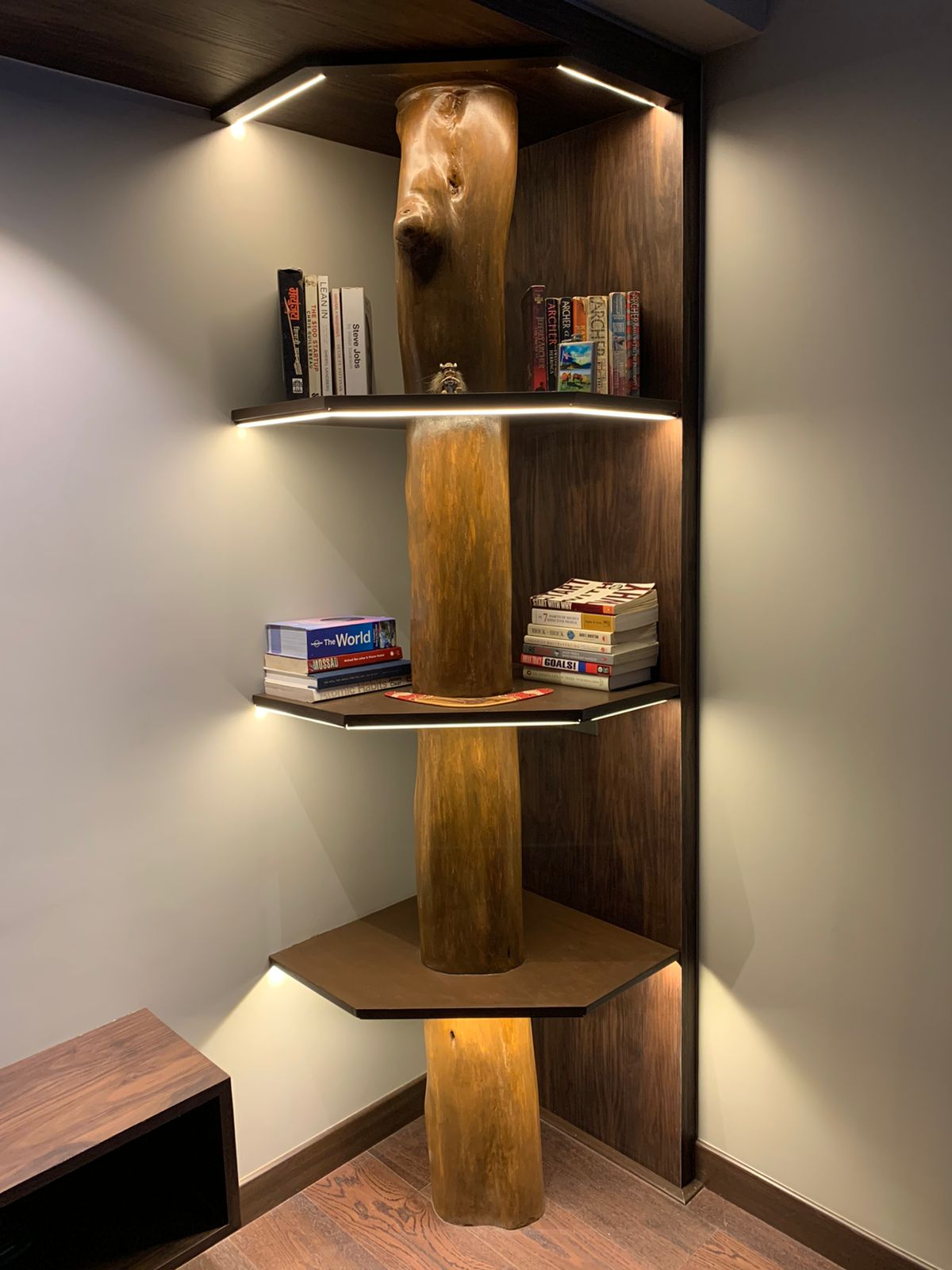
Edited by Padmashree Pande. All picture credits to The Druid’s Garden.
No comments:
Post a Comment